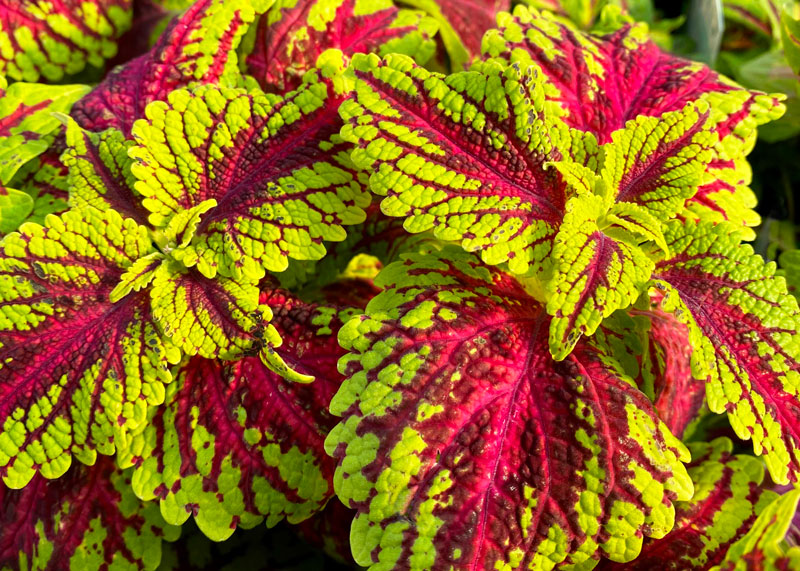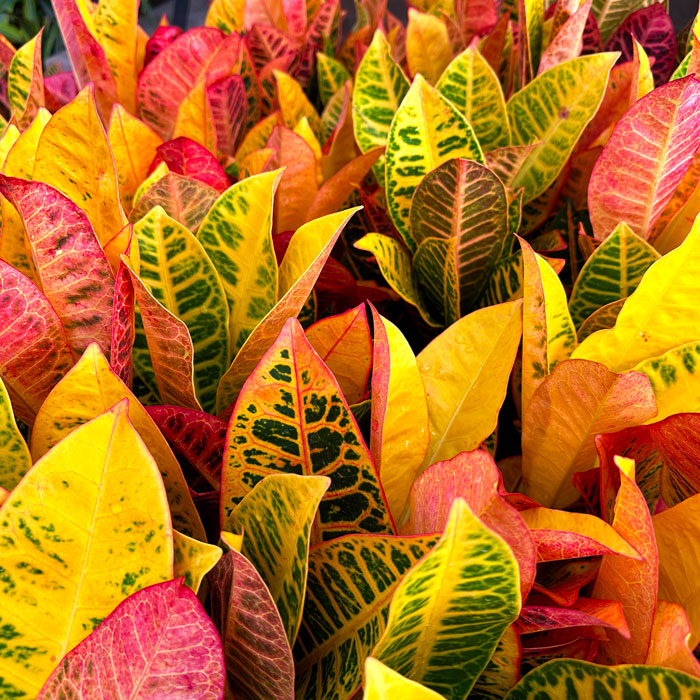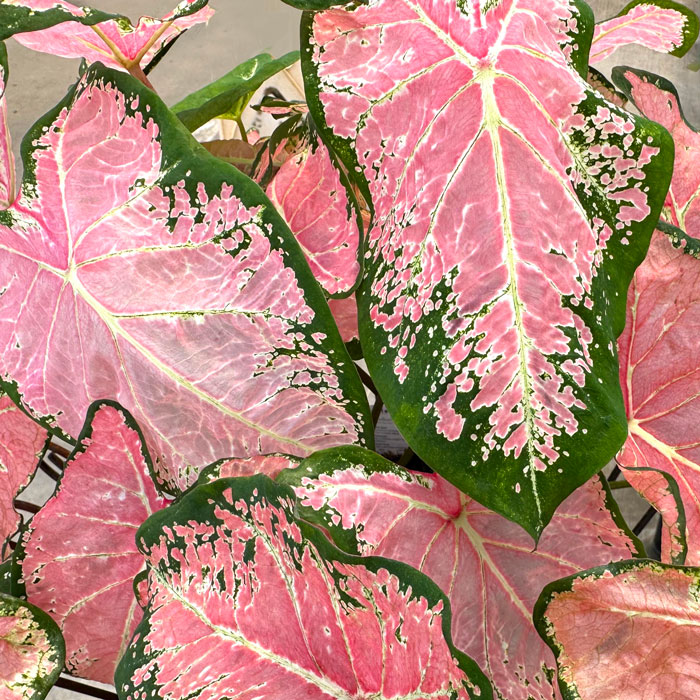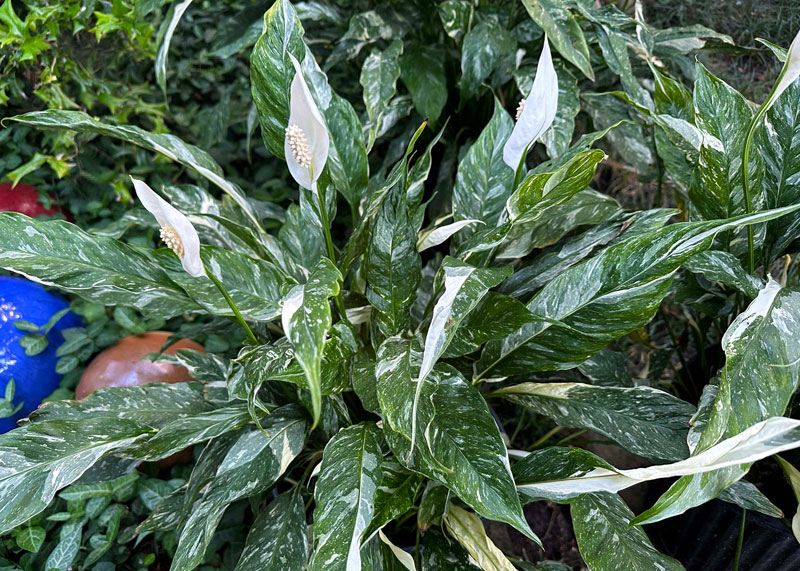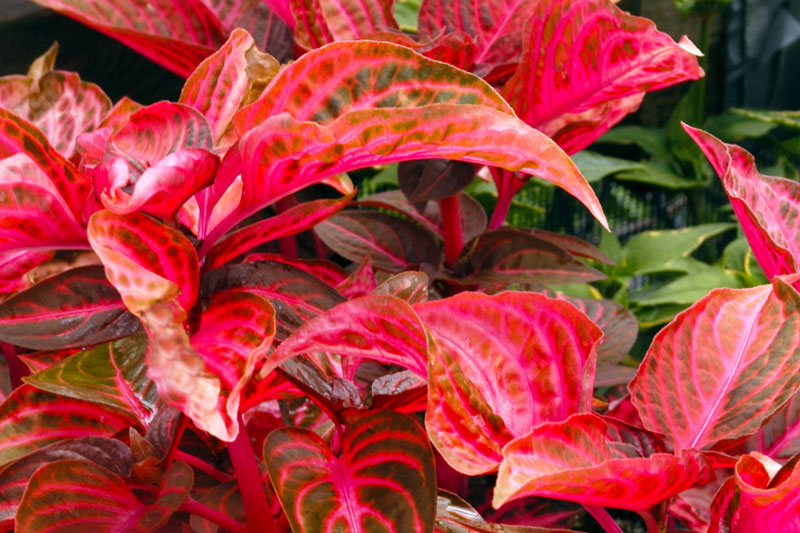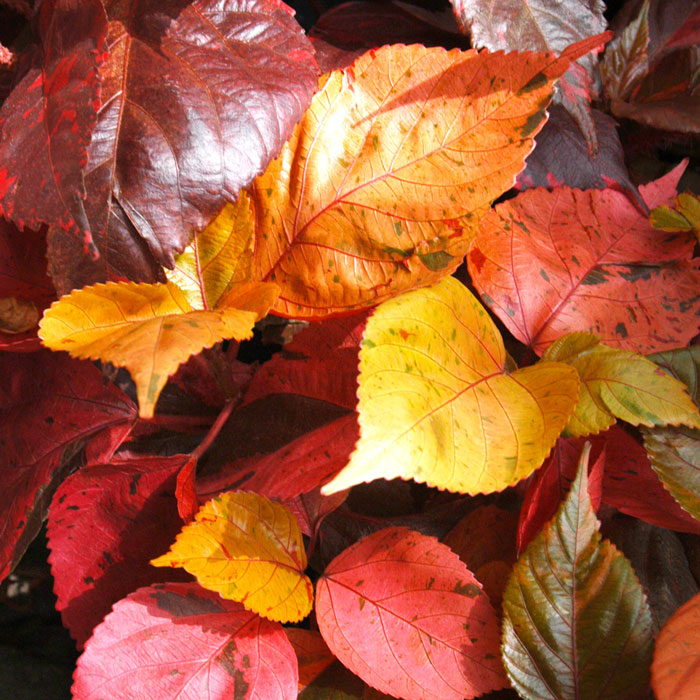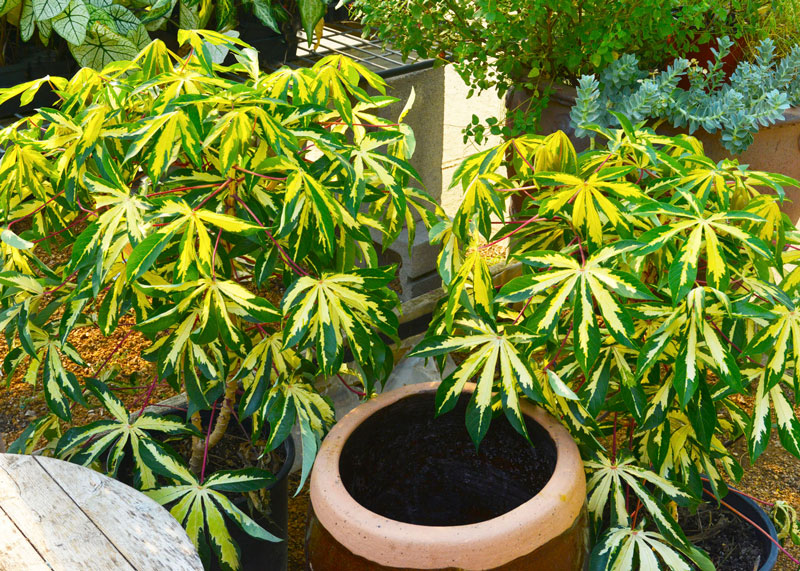Favorite Foliage
Don’t get me wrong – I have no issue at all with plants that want to bloom in the heat. But it’s nice when there are also plants with colorful leaves alongside them. Plants whose handsome foliage draws attention to their parts of the garden. Here are 5 of my longtime favorites.
• Coleus You could have asked me to come up with this list at any point in the past 70 years of my life, and coleus would have been at the top. Even with that, they’ve come so far in that time. Originally about all we had were types grown from seed. They started from seed, and they went back to seed in just a few months. Now we have types that are reluctant to bloom, hence no seeds. They just keep producing beautiful leaves all summer and fall. And, best of all, breeders have worked to find us types that could stand up to more and more sunlight. These are ever more at the top of my list of plants for colorful foliage.
• Crotons When I was a kid with a greenhouse, these were the exotic plants I dreamed of. Now, you see landscapers using them without reservation. In pots and even in ground plantings – treating them as annuals. They handle almost full sun. They need morning sun to color up to their full potential, but a little shade in mid-afternoon in July and August will keep them from bleaching. There are so many colors and leaf forms. Don’t think they all look like the common ones you see being sold in mass markets.
• Caladiums Where have all the caladiums gone? Once the stalwarts of Texas shade gardening in summer, they’re just not as common as they should be. Certainly cost of the tubers has to be one factor, but with all the new types Florida growers are bringing into the market, you really ought to revisit this great tropical annual. Buy the large tubers when they go on sale, but don’t rush to plant them. Wait until Mother’s Day so you’ll know the soil is finally warm. If you don’t get them planted until early June, no problem. You’ll still get the same number of weeks of beautiful foliage.
• Domino spathiphyllum OK. This one’s for me. Remember: These are my favorite sources of summertime landscaping color. I have this handsome small-ish selection of peace lily growing (actually, four of them) in pots along our driveway and courtyard. We see them many times each day and evening. I’ve positioned them so the Lentz Landscape Lighting from the trees pours its “moonlight” directly onto them, and they’ve been doing their part by blooming for the past 10 weeks. Pure white flowers set against the dark green and speckled white leaves. I’m writing this at 10 a.m. yesterday (Wednesday) morning with the sun shining brightly, and the memories of seeing those plants out on the courtyard last night and every night is beautifully vivid in my mind. This is one of those little discoveries you make and cherish.
• Iresine (bloodleaf) I see this little beauty in nurseries, but it’s never caught on like the other big summer sellers. It’s not the strongest grower. I’ve seen landscaping specialists grow it in highly maintained beds, but most of us mere mortals do better with it in patio pots. When you give it that space it will steal your heart. Vivid red leaves catch rays of sun from its shady spots along gardens’ edges. If you ever see one, buy it and give it a try. And include its lovely yellow variegated sister with the homely agrarian name: chicken gizzard plant.
And 2 more for good measure…
These two plants seem to have been left at the curb. One was the most planted source of summer foliar color. The other looked like it would be a popular patio plant, but after just a couple of years it disappeared.
• Copper plant When these plants were introduced to landscapers in the late 1950s they were instant favorites. I remember going shopping with my parents in Houston and seeing hundreds of feet of them in big beds in Houston parks. My wife and I were in Houston just this past Monday driving past those same big beds (and a ton of other landscapes), and I didn’t see my first copper plant. Nor have I seen them in Dallas/Fort Worth for 10 or 15 years. They’re great where you need a medium to tall background plant (28-36 in.) behind lower flowering annuals. The problem is that most landscapes don’t have big beds because the landscapes themselves don’t have enough space. But this plant remains a solid choice that at least ought to be offered. (Gardening can be so faddish.)
• Variegated tapioca This tropical beauty gets a little taller still. Its yellow summer foliage rocks and rolls its way through the landscape, but I guess it was slightly too big or perhaps too boisterous for Texas gardeners. However, I liked it a lot, so I get to put in on my list of my favorites for whatever good (or frustration) that will bring us.

